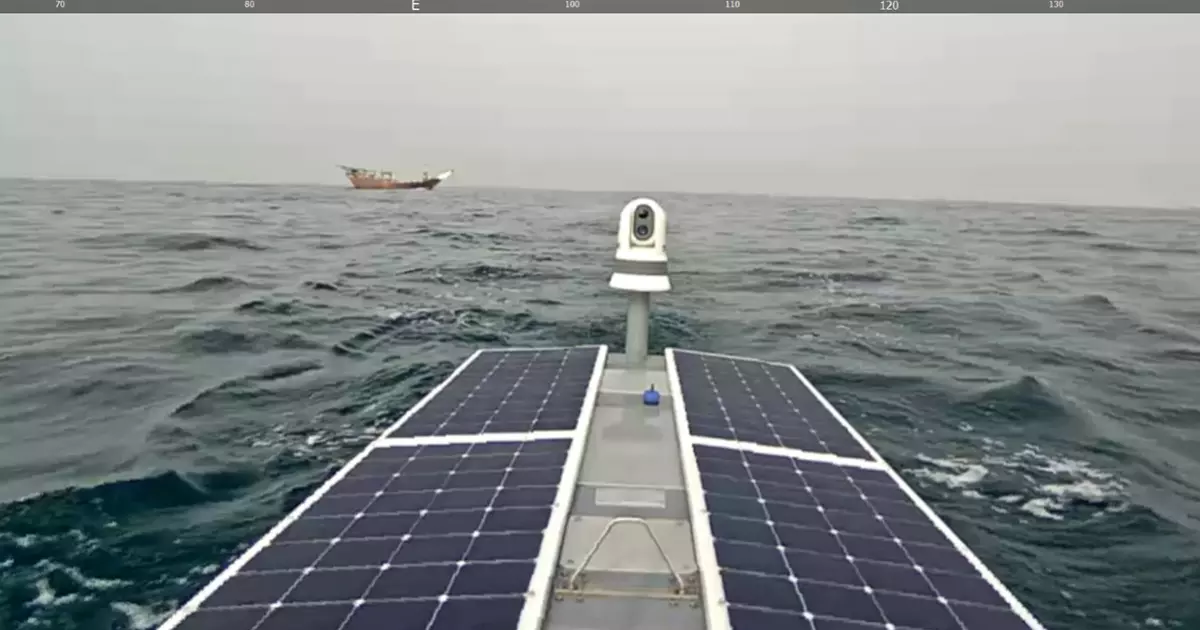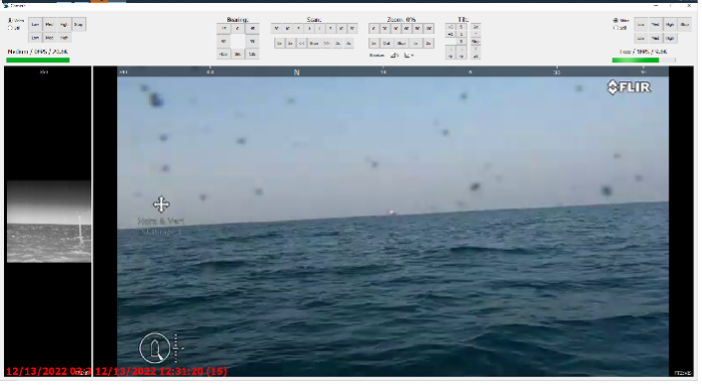Rapid Development in the Navy: Working with Task Force 59 in the Arabian Gulf

UsX Roadmap’s Challenge:
In its comprehensive Unmanned Systems (UsX) Roadmap, a phone book thick treatise first published in 2015, the US Navy acknowledged its challenge from the outset:
“Technological advancements are outpacing all aspects of acquisition, hindering insertion of innovative capabilities into the fleet and full realization of UxS employment. Development and use of new policy must match the pace of technology and threats.”
How, in other words, to adopt the latest and greatest tech into an organization encompassing nearly 1 million people (including personnel and civilian employees), 500 s, and 3,000 aircraft spread around the globe?
The Navy answered its own question on the first page of its Roadmap’s Executive Summary, namely to “Leverage emerging accelerated acquisition process to enable rapid development, demonstration and fielding of UxS.”
Task Force 59
To this end, in the fall of 2021, the Navy stood up Task Force 59 (TF 59), the first U.S. Navy task force of its kind, designed to rapidly integrate unmanned systems and artificial intelligence with maritime operations in the U.S. 5th Fleet. The U.S. 5th Fleet area of operations encompasses nearly 2.5 million square miles of water area and includes the Arabian Gulf, Gulf of Oman, Red Sea and parts of the Indian Ocean. Geographically and strategically significant, the region is comprised of 21 countries and includes three critical choke points, at the Strait of Hormuz, the Suez Canal and the Strait of Bab-al-Mandeb at the southern tip of Yemen.
With its high heat, challenging operating conditions, and high stakes, the Arabian Gulf makes an ideal “trial by fire” testbed. If the “best of the best” unmanned tech works here, the thinking goes, it can work anywhere.
Enhance Maritime Domain Awareness & Increase Deterrence
Since its inception, TF 59 has organized or been a part of at least three unmanned exercises to trial the best-in-class unmanned systems: International Maritime Exercise 2022 (IMX 2022, Feb 2022), Digital Horizon 2022 (DH ‘22, Nov-Dec 2022), and International Maritime Exercise 2023 (IMX 2023, Feb-March 23). The use cases are dual: to use the unmanned systems to enhance maritime domain awareness (MDA), and to increase deterrence. And in an unusual twist for the military, the unmanned tech at these exercises is “company owned / company operated,” by the entrepreneurs and civilian employees themselves alongside the military personnel.
SeaTrac SP-48 for MDA
SeaTrac Systems, a solar powered USV manufacturer in Marblehead, MA, was among the 15 or so unmanned providers selected to participate in DH ‘22 as well as IMX 2023. For both events SeaTrac deployed one of its 4.8m SP-48s, painted gray for the Navy. In addition to the four situational awareness cameras on a standard SP-48, this model was equipped with a high-performance visible and infrared camera with pan / tilt / zoom capabilities to provide high quality imagery day and night to TF 59’s AI system. The Navy selected a radio with mesh networking capabilities, which was integrated as well.
 SeaTrac’s SP-48 painted gray for Task Force 59’s unmanned exercises in the Arabian Gulf
SeaTrac’s SP-48 painted gray for Task Force 59’s unmanned exercises in the Arabian Gulf
Some of the key features of the SP-48 that makes it well suited for this MDA mission:
- The SP-48 is persistent vehicle intended for months long deployments. It has a large set of solar panels that enable it to support surveillance payload packages.
- Launch and recovery is performed easily from a trailer on a standard boat ramp. It can also be done from a with a crane using the vehicle’s center lift point.
- The SP-48’s large battery and solar array enables it to transit under its own power from the ramp, out through the harbor, and on to the operating area “op box” 30 miles offshore for IMX 2023, arriving with the tank 90% full.
- The platform has multiple communication channels--two cellular links and two satellite links-in addition to the Navy’s mesh network, providing backup comms and reliable command and control (C2) for the vehicle at all times.
A Front Row Seat in Bahrain
Life with TF 59 moves quickly: a Mario Andretti quote on the wall in TF 59’s Robotics Operation Center sums it up well: “If you have everything under control, you’re not moving fast enough.” For SeaTrac, the first test came early: from the date SeaTrac was included for DH ’22, the company had approximately a month to build, integrate the payload, and deliver the SP-48 to Norfolk for air transport in the belly of a C-17 to Bahrain.
Once the vehicle was on base, SeaTrac sent a crew to set up and operate the vehicle for the month-long duration of the exercise. During this period, the partner companies and the Navy got down to the real work of completing the integration and executing the missions for the exercises. Another quote on the wall at TF 59 sums things up well, this one from Mike Tyson: “Everyone has a plan ‘till they get punched in the mouth.” Things don’t always go as planned, and the reaction to a setback is important. The team at SeaTrac suffered some damage during a storm but was able to return the vehicle to its normal duties within 24 hrs. And overall, the partner companies and the Navy were able to integrate the systems and show them on TF 59’s integrated control system – its “single pane of glass”.
 A container ship captured by SeaTrac on standard camera (at left), and the same ship captured with zoom
A container ship captured by SeaTrac on standard camera (at left), and the same ship captured with zoom
Factory to Fleet: What’s Next?
The Task Force 59 model is currently in a development and exercise mode, enabling both the Navy and its commercial partners to rapidly build real-world experience. This collaboration lays a foundation to help the Navy develop a path to more of an operational model in the future. Stay tuned for more exciting details about that! Along with the other commercial partners involved with TF59, SeaTrac is eager to help the Navy’s transition to robotic platforms. Even though our uncrewed surface vehicle’s top speed is 5 knots, operationally, we are big fans of Mario Andretti.
Bibliography:
https://www.secnav.navy.mil/rda/Documents/DON-Strategic-Roadmap-for-Unmanned-Systems.docx

